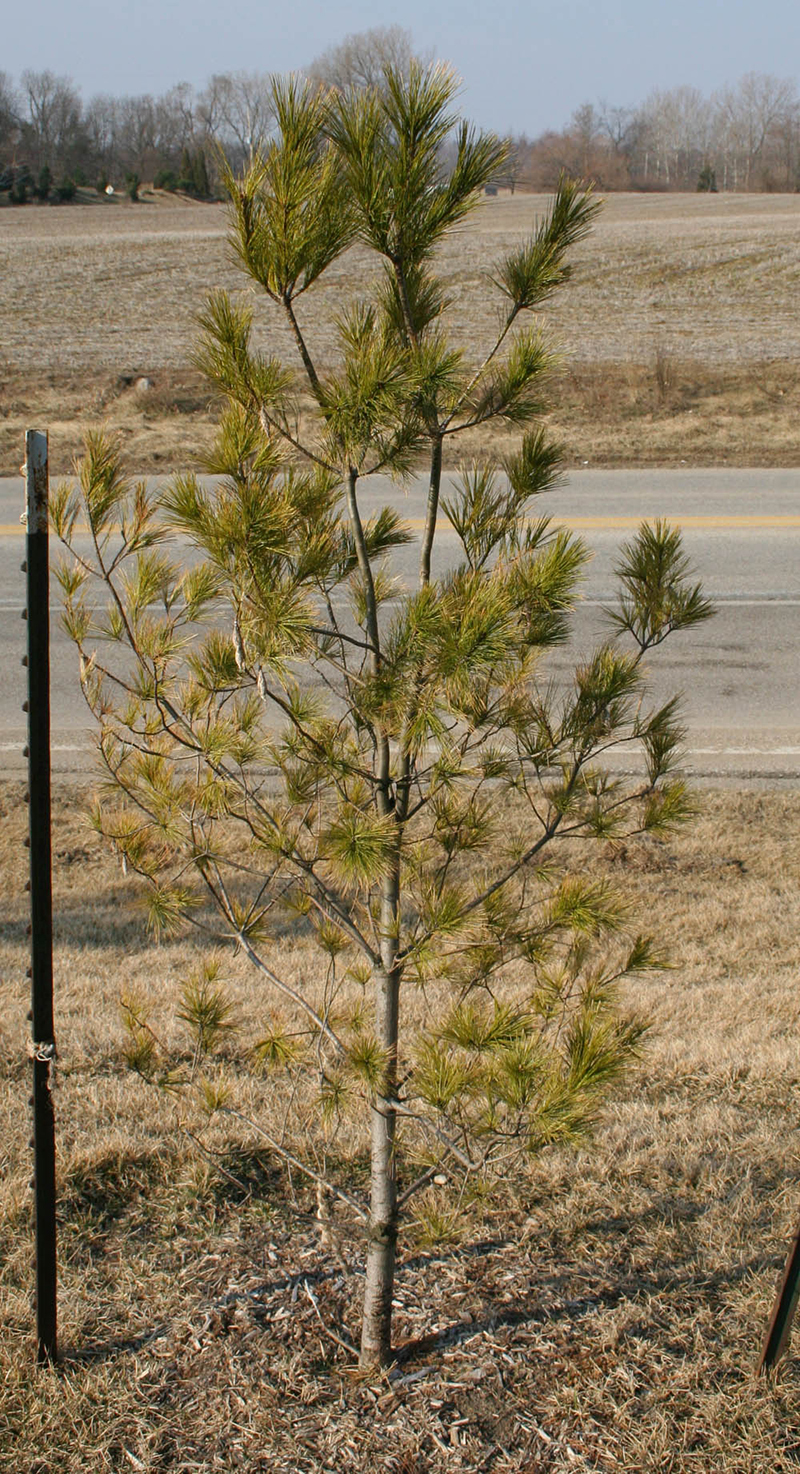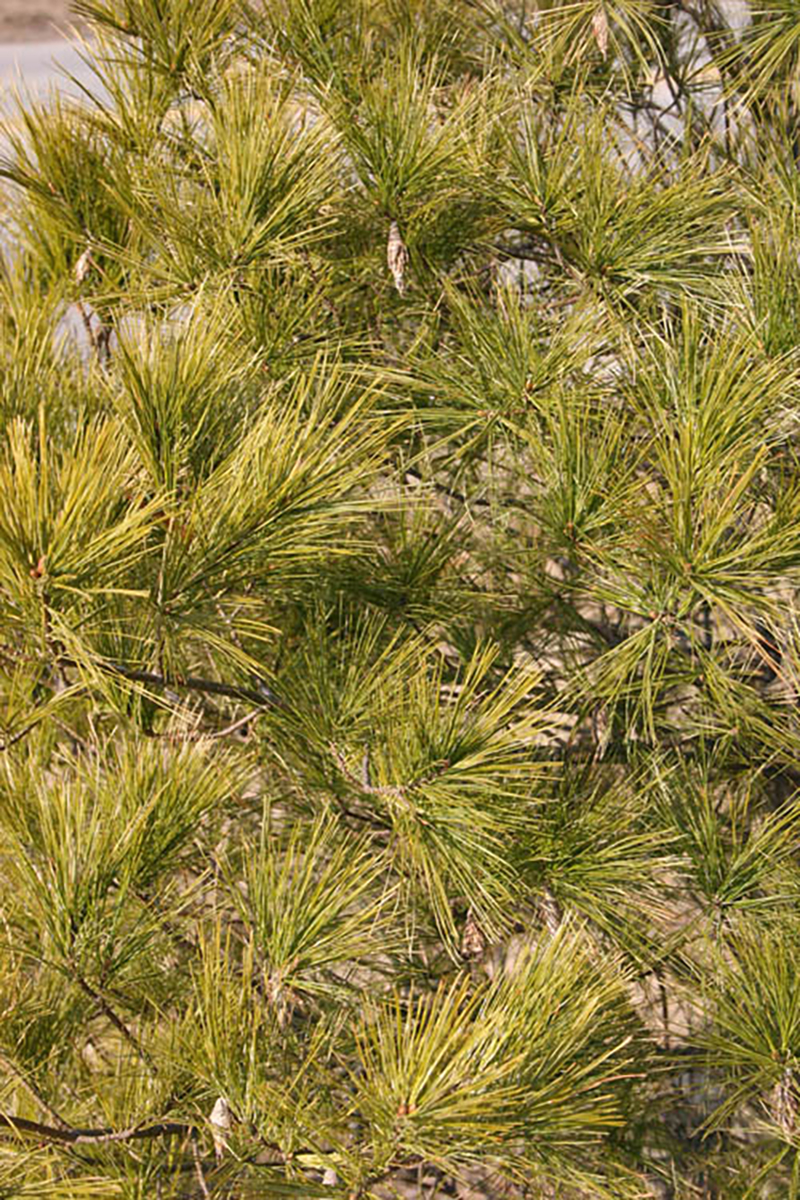Picture of the Week
March 22, 2021
Chlorosis of pine trees
Tom Creswell, Plant and Pest Diagnostic Lab Director, Purdue University
Pines in much of Indiana often struggle on our high pH soils. Many species of pine require a pH around 5.2 to 6.0 but many soils in Indiana are 7.0 or higher due the limestone bedrock underneath. When the pH is this high, iron (Fe) and manganese (Mn) may be in in a form that is not available to the tree, even though they are present in the soil so the nutrients needed for healthy green growth in pines can’t be taken up. The result is stunting and, more noticeably, a yellowing of the needles.
Pine chlorosis is often more prevalent, or more noticeable in late winter/early spring. There are two possible reasons for this. First, soil that is often saturated during this time due to rains or snow melt. In saturated soils, there is not enough oxygen and the plant cannot take up the nutrients that is needs for normal growth. Second, the plant is also preparing to grow and new growth (while still not visible to the naked eye) may be taking nutrients from the older needles. This is common in many species, especially those that grow in “flushes” like pines do.
Click image to enlarge



